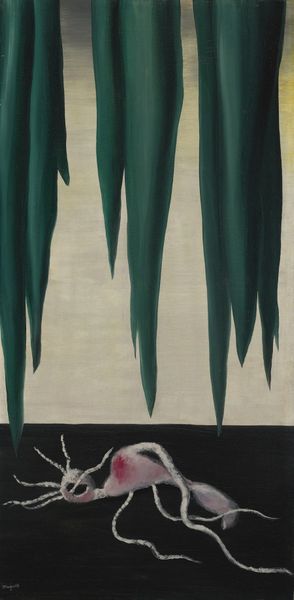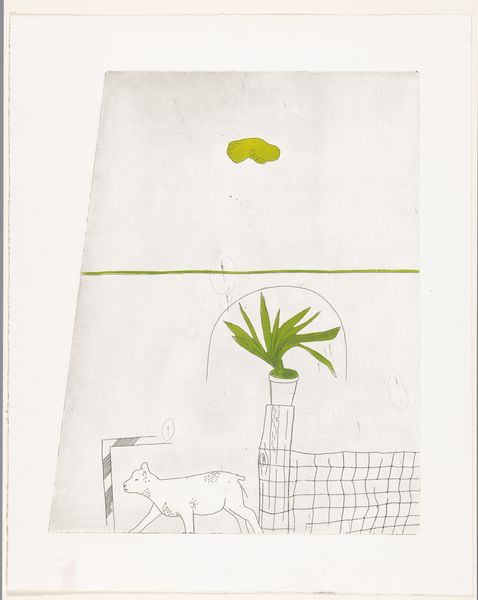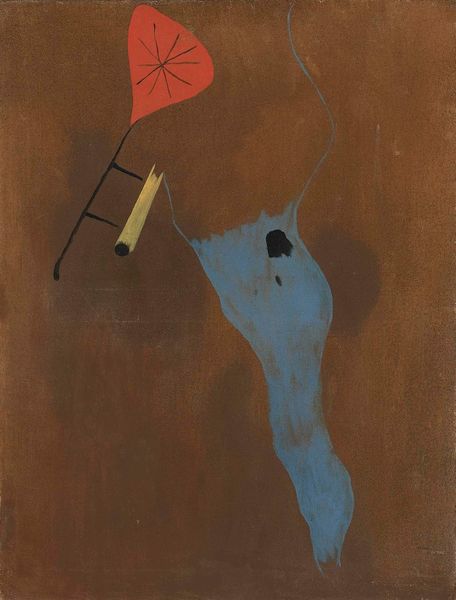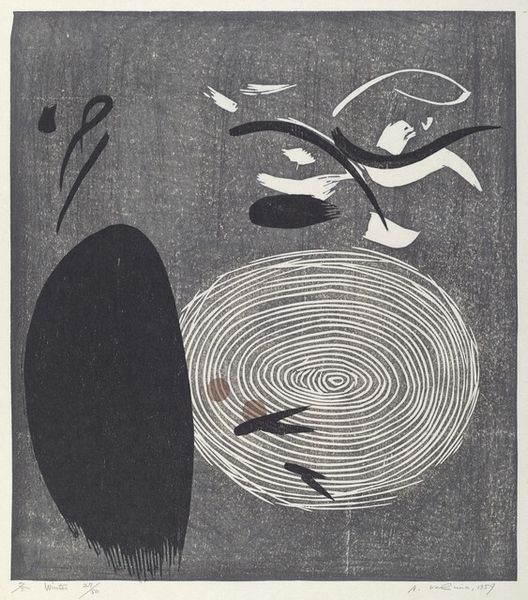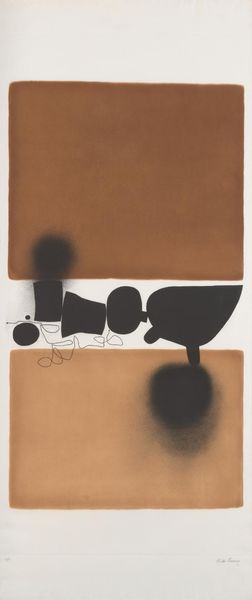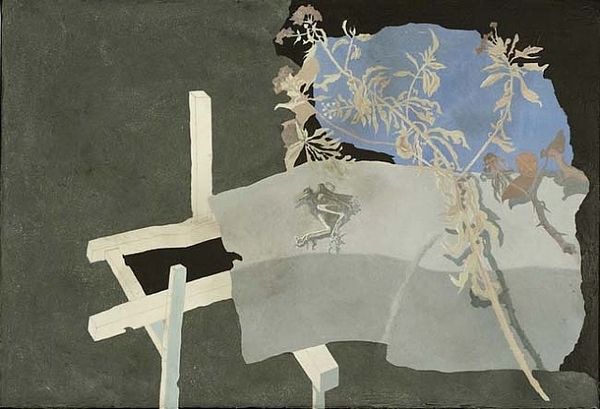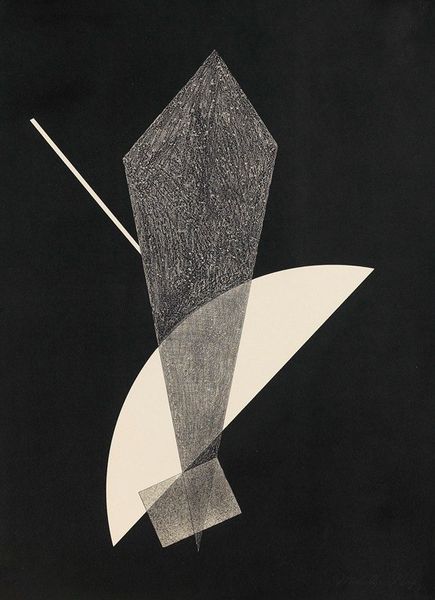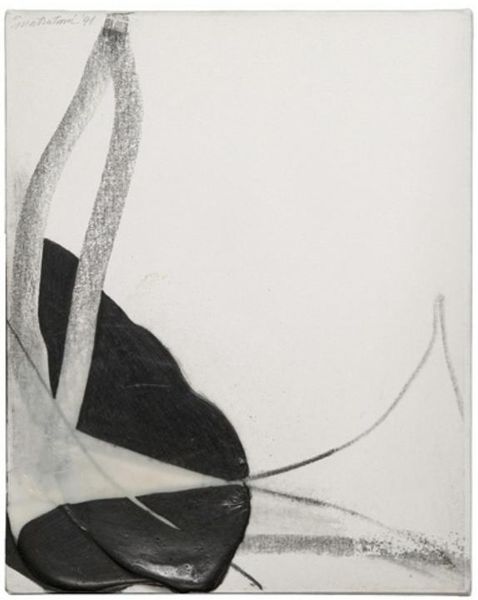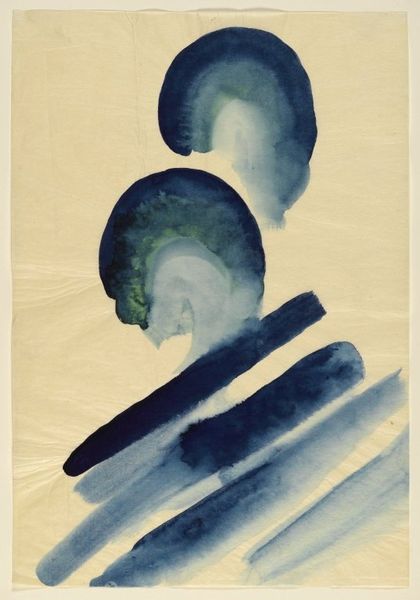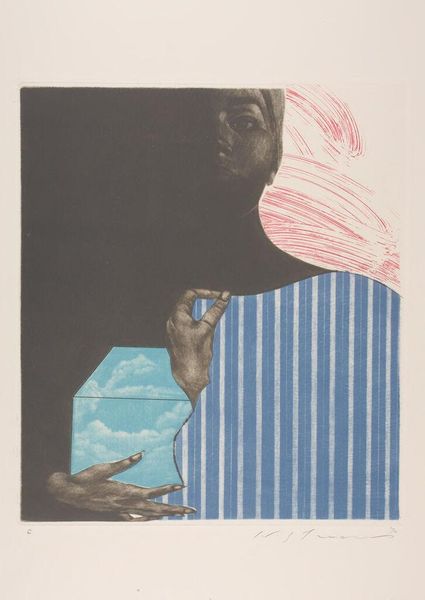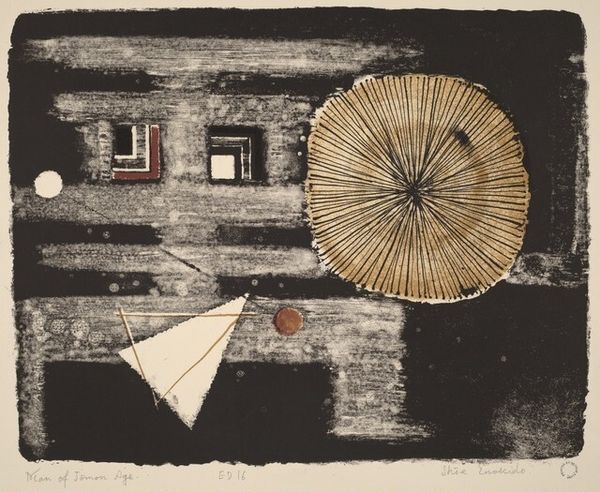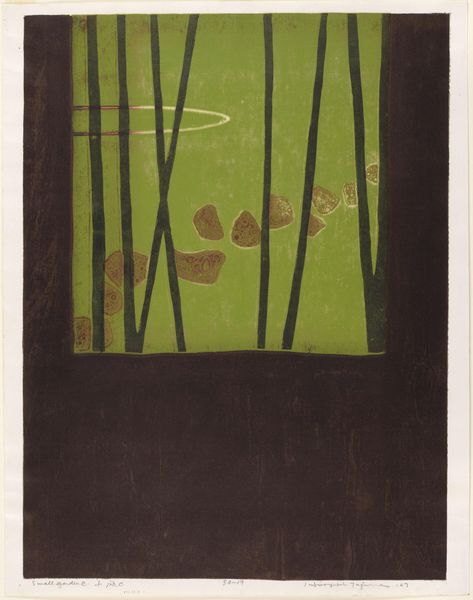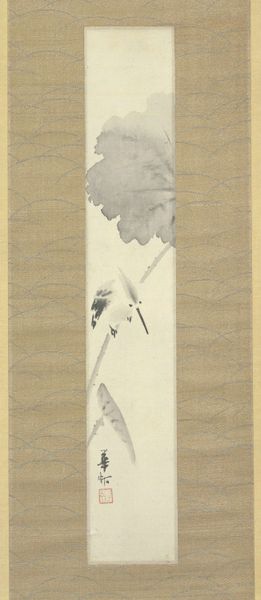
mixed-media, collage, acrylic-paint
#
mixed-media
#
collage
#
landscape
#
acrylic-paint
#
surrealism
#
modernism
Copyright: Conroy Maddox,Fair Use
Editor: Right, so next up we have Conroy Maddox's "Scene of the Crime," from 1972. It's a mixed-media collage, incorporating acrylic paint and various other materials. I'm really struck by how unsettling such a domestic scene can feel – that eerie chair, those stains... what do you make of it? Curator: Ah, Maddox. Always a provocateur. For me, the crime isn't so literal, more an indictment of bourgeois comfort. That Eames chair, a design icon, is almost violated by the intrusion of those metal cylinders. Like thought processes become intrusions, too real in a space designed for appearances, a domestic scene becomes a theatre. It's really a collision of inside and outside, order and disorder. Does the curtain being partially drawn relate to being able to be exposed but still have some privacy? Editor: I never thought about the tension between comfort and something more sinister. The cylinders – you read them as thoughts? Curator: Perhaps? Or even repressed desires, rendered in cold, hard metal, unable to fit into that picture-perfect chair. Consider the “landscape” coming from the outside with some grass. All staged on a painted set of wooden floors. Editor: That's a great point. So, he's using recognizable imagery, a familiar space even, to hint at something hidden beneath the surface, and something that goes back and forth between what is intimate to oneself versus the facade? Curator: Precisely! The 'scene' itself becomes secondary to the psychological drama unfolding within it. Madness, really, becomes present by exposing “scene” as an intersection of mental landscapes. Editor: Well, I will never look at an Eames chair the same way. Thank you! Curator: My pleasure, hopefully I helped highlight some thoughts from madness itself, who knows what the artist wants but that is part of what is fascinating in how we, the spectator, change ourselves after a “view”.
Comments
No comments
Be the first to comment and join the conversation on the ultimate creative platform.
